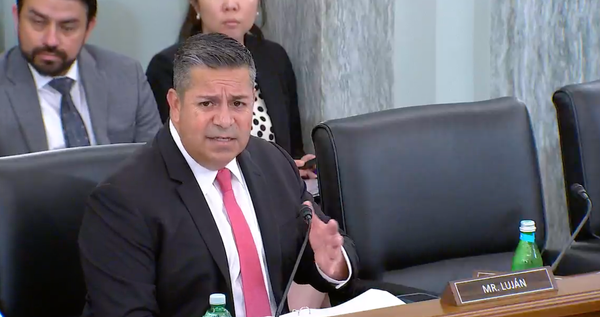AT&T FWA Subscribers Surpass Expectations
The company also reported low mobile churn despite network outages and a data breach.

WASHINGTON, April 24, 2024 – AT&T added more fixed wireless broadband subscribers than expected in the first quarter of 2024, the company said in an earnings call Wednesday.
The company added 110,000 subscribers to the AT&T Internet Air service it launched last year, ahead of the 77,000 analysts had expected and bringing the total to 203,000 connections. Fixed wireless broadband still isn’t as big a part of AT&T’s business as some of its competitors, like Verizon, which crossed the 2 million subscriber mark for its residential FWA service in the first quarter of this year.
In line with previous statements from chief financial officer Pascal Desroches, AT&T CEO John Stankey said on Wednesday’s earnings call that the company is still focused on fiber broadband is set on using its FWA service selectively.
For example, Stankey said that in areas where the company is shuttering legacy copper infrastructure “and we know that we’ll be 12 months or 18 months from fiber deployment, we may want to hold some customers.
“We’ll use it as a bridging or hold strategy for those customers that are high value to us,” he said.
New Street Research said in an investor note that capacity on wireless networks could start to dampen subscriber additions more broadly as networks and spectrum bands get more congested.
“If capacity limits haven’t started to impact trends yet, they will soon,” the research house wrote.
AT&T’s consumer fiber adds were in line with expectations at 252,000 in the three months ending on March 31, putting total fiber subscriptions at 8.6 million, a 14.3 percent increase from the same quarter last year. That also helped broadband revenues increase 7.7 percent from the same period, hitting $2.7 billion. The company currently passes more than 27 million locations with its fiber infrastructure and is working with investment firm BlackRock on a separate open access network, on which it will be the first tenant.
The company reported higher than expected wireless subscription increases in the quarter. The company added nearly 350,000 mobile subscribers, ahead of the expected 308,000. Churn, the percentage of customers leaving the service, was 0.72 percent, the lowest first quarter figure on record for the company.
Despite widespread network outages in February and a data breach in April that affected more 73 million current and former customers, Stankey said the company is feeling confident.
“I’m sure there were a couple of days of maybe some suppressed activity as a result of the outage. I think it’s probably something that’s measured in days, it wasn’t measured in weeks or months,” Stankey said. “But, you know, we feel pretty good about where we stand right now.”
The company posted $30 billion in revenue, below an expected $30.5 billion, but its net income came in above expectations at $3.1 billion.
BEAD, ACP
“I think BEAD is a 2025 issue, it’s not a 2024 issue,” Stankey said. “It doesn’t feel like it’s moving in all that fast at the state level.”
“It’s pretty clear to me that there’s places we’re going to be more energized about playing and places where we’re going to be less energized about playing, depending on how various states are approaching this,” he said.
Most states have not yet had their plans for implementing the $42.5-billion broadband expansion program fully approved by the Commerce Department. Many are still in the process of ground-truthing coverage data.
Stankey said the company could “work through the ACP sunset, if in fact that occurs, but I would say it’s probably more likely than not that it does occur,” and will continue to market its low-cost Access plan to lower income consumers.
The Affordable Connectivity Program provides about 23 million low-income households with a $30 discount on their internet bills. It was stood up by the Infrastructure, Investment and Jobs Act but is rapidly running out of cash. April is the last month of full benefits and the remaining funds will be exhausted by the end of May if lawmakers are unsuccessful in efforts to fund the program.
“I would hope, or expect, that our competitors might continue to leave some kind of a discounted offer in place for those who qualify for it,” he said.










